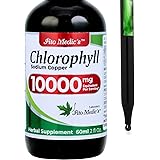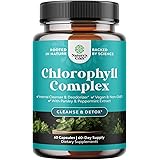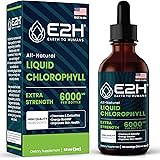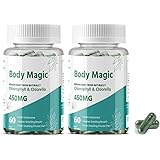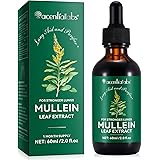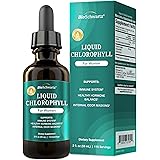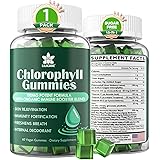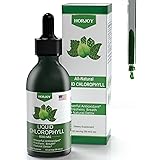The journey through addiction is often portrayed as a battle of willpower. However, as the powerful video above illustrates, the reality of Alcohol Use Disorder (AUD) is far more complex. This deeply personal account challenges common misconceptions. It highlights the biological roots of addiction. Claudia Christian shares her nearly decade-long struggle. Her story offers hope for many others.
For over 30 years, Claudia worked in the entertainment industry. She was a light drinker in her 20s. She became a social drinker in her 30s. Then, in her early 40s, AUD developed. This term, Alcohol Use Disorder, is now preferred. It covers various drinking patterns. These range from occasional binge drinking to chronic daily consumption. Her experience resonates with countless individuals. They too face similar challenges.
The Elusive Search for Control: A Personal Battle with AUD
1. Claudia realized something was wrong. She was always the last person drinking. Everyone else switched to coffee. She continued to quaff wine. This was a clear sign. She decided to go cold turkey. Many believe this is the solution.
2. Going sober led to the “alcohol deprivation effect.” This is a critical concept. After the initial “honeymoon period” of sobriety, cravings intensify. Physical cravings become constant. Triggers are everywhere. A liquor store or a pub can ignite anger. Isolation often follows. People avoid friends and family who drink. This cycle is confusing. It is especially so for someone who likes control. AUD took away that control. She describes it as “the monster.”
3. Addiction, like a monster, spares no one. It affects every ethnicity and social class. Race, sex, and age are irrelevant. Even the most disciplined person can fall prey. The monster takes control. Claudia soon understood this. She sought help relentlessly.
Traditional Paths: Costly Missteps and Recurring Relapses
1. Claudia pursued every available treatment. She went to a $30,000 rehab. Here, she drank wheatgrass. She practiced Tai Chi. She attended talk therapy for 2.5 years. Each session cost $200. She saw a hypnotherapist for $400 an hour. He claimed to cure a Grateful Dead member. She went to 12 different AA meetings. These were in two countries. She tried macrobiotic diets. Her chakras were realigned. Veganism was attempted. She prayed until her knees were sore. Nothing seemed to work.
2. Relapses were constant. She relapsed close to 20 times. Each relapse grew more severe. Recovery became harder. These failures were not due to a bad childhood. There was no personal trauma. She had a great life. She loved her career. Friends and family supported her. Her drinking was due to a physical addiction. It was that simple. Once she started, she could not stop. Addiction ran in her family. This genetic predisposition, combined with drinking, made her an addict.
3. After countless attempts, one fact was clear. Equine therapy or Tai Chi would not fix her biological addiction. Six months of sobriety followed in late 2008. Then, the insidious voice of addiction returned. It whispered, “You’re not an addict. Just have one drink.” She listened to this inner “idiot.” One glass turned into two. Two glasses became three. Soon, she was in a full-blown binge. She would drink anything. Even vanilla extract seemed appealing.
4. Eventually, she was too ill to drink. She tried to detox cold turkey. This time, seizures began. She lost motor control. She could not stand or dress herself. A friend took her to medical detox. Treatment was poor until payment. They demanded $3,000. Finally, she received medication. Her shaking stopped. Humiliated, she checked out. A stack of flyers offered hope. One mentioned a shot. This shot promised to eliminate cravings. It cost over $1,000 a month.
Unveiling a New Hope: Naltrexone and The Sinclair Method (TSM)
1. At home, Claudia Googled the shot. Its main ingredient was Naltrexone. This is an FDA-approved medication. It is non-addictive and safe. Naltrexone has treated AUD since 1994. Her search led to a book. It was titled *The Cure for Alcoholism*. Dr. Roy Escapa wrote it. A sample chapter hooked her. The science lover in her brain was intrigued. It made complete sense.
2. The book described The Sinclair Method (TSM). TSM involves an opiate blocker. This medication is taken first. You wait for an hour. This allows the drug to enter your system. Then, you drink alcohol. This sounds counterintuitive. However, the science is profound.
How The Sinclair Method Re-programs the Brain
1. Normally, alcohol provides a reward. This reward reinforces addiction. It makes you want more. When you drink on an opiate blocker, this changes. Naltrexone or Nalmefene (in the UK) block endorphins. Endorphins usually activate addiction pathways. The blocker prevents this activation. The addictive synapse is not reinforced.
2. Imagine a room full of endorphins. Every time you drink, they rush out. They wreak havoc in your brain. They excite neuro pathways. The opiate blocker slams the door. It locks the endorphins in. They cannot escape to play. This process is called pharmacological extinction. It slowly re-trains your brain. Your association of pleasure with alcohol diminishes.
3. Over days or weeks, drinking decreases dramatically. Cravings subside significantly. This leads to detoxification. Claudia faced a challenge. No doctor would prescribe Naltrexone. She ordered pills online. They were 50 milligrams of hope. They arrived after a few weeks. Fear set in. What if it failed? What if relapse was worse? Desperation outweighed fear. She took the pill. She waited an hour. She poured wine. It was a miracle. The wine sat untouched. No head games occurred. No compulsion for more appeared. She took a few sips. Then, she was done. It truly was a complete miracle.
The Profound Impact of TSM: From Triggers to Freedom
1. Three months into TSM, a true “aha moment” struck. A billboard near her home triggered her. It showed a huge glass of red wine. Red wine was her particular “poison.” If she was drinking, it triggered cravings. If sober, it brought frustration. One day, she drove past it. Her brain simply said, “That’s just a billboard.” This moment was profoundly significant. It meant her thought processes were normal. Her brain was fixed. She was herself again.
2. Six months into TSM, she achieved mostly sobriety. She had occasional, planned drinks. These were always one hour after Naltrexone. TSM worked incredibly well. She contacted Dr. Roy Escapa. She thanked him for his book. She also thanked Dr. David Sinclair. His research saved her life. She asked how to help spread awareness. He suggested she write a book. And so, her journey of discovery began.
Challenging Outdated Paradigms: The Stark Reality of AUD Treatment
1. Claudia’s research revealed alarming facts. The World Health Organization (WHO) estimates 3.3 million people die annually. These deaths are from alcohol-related causes. This is more than malaria, tuberculosis, and AIDS combined. Multiple researchers confirm this. An estimated 80% to 90% of AUD sufferers do not seek treatment. Many fear lifelong abstinence. To a young adult, this is daunting. It can feel unrealistic.
2. Of the 10% who seek traditional treatment, up to 90% relapse. This occurs within the first four years. What other treatable disease has such abysmal success? Studies show “tough love” doesn’t help. Humiliating an addict makes things worse. Dr. Keith Humphries of Stanford University agrees. He states, “If punishment worked, there wouldn’t be any addiction.” It is a punishing enough experience. Addicts deserve sympathy and comfort. Instead, they face judgment. “Just quit” and “just say no” are common refrains. There is a lack of understanding. Many suffer for a decade or more. Why do we believe addiction can be stopped quickly? Why rely solely on talk therapy and willpower?
3. The WHO estimates a person dies every 10 seconds. This is due to Alcohol Use Disorder. Is our current system truly the best? We must ask ourselves this question. The current methods often fail. There is a better way.
A Future Transformed: The Power of TSM
The Sinclair Method boasts a 78% long-term success rate. Imagine a world with 78% fewer alcohol-addicted people. This impact would be profound. Imagine 78% fewer broken families. Imagine less child abuse. Think of fewer lost workdays. Insurance costs would drop. Accidents would decrease. The benefits are endless. The Sinclair Method uses science. It empowers individuals. It offers recovery to friends, family, and yourself. Claudia calls it “Control-Alt-Delete” for addiction. She is no longer powerless. The monster is gone. She is in control. The Sinclair Method offers hope. It works wonders for many. It is a dream to see it widely offered. Please help spread the word about this life-saving treatment. Let’s give addicts the option they deserve. The Sinclair Method provides a clear path forward.




